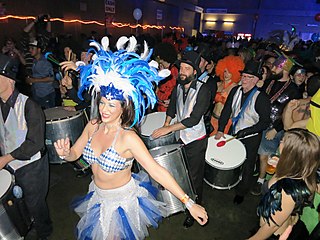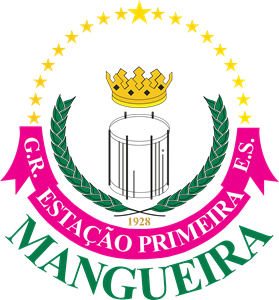
Carnival is a Catholic festive season that occurs before the liturgical season of Lent. The main events typically occur during February or early March, during the period historically known as Shrovetide. Carnival typically involves public celebrations, including events such as parades, public street parties and other entertainments, combining some elements of a circus. Elaborate costumes and masks allow people to set aside their everyday individuality and experience a heightened sense of social unity. Participants often indulge in excessive consumption of alcohol, meat, and other foods that will be forgone during upcoming Lent. Traditionally, butter, milk, and other animal products were not consumed "excessively", rather, their stock was fully consumed as to reduce waste. This festival is known for being a time of great indulgence before Lent, with drinking, overeating, and various other activities of indulgence being performed. For example, Pancakes, donuts, and other desserts are prepared and eaten for a final time. During Lent, animal products are eaten less, and individuals have the ability to make a Lenten sacrifice, thus giving up a certain object or activity of desire.

The Carnival of Brazil is an annual Brazilian festival held the Friday afternoon before Ash Wednesday at noon, which marks the beginning of Lent, the forty-day period before Easter. During Lent, Roman Catholics and some other Christians traditionally abstained from the consumption of meat and poultry, hence the term "carnival", from carnelevare, "to remove meat."

A samba school is a dancing, marching, and drumming club. They practice and often perform in a huge square-compounds and are devoted to practicing and exhibiting samba, an Afro-Brazilian dance and drumming style. Although the word "school" is in the name, samba schools do not offer instruction in a formal setting. Samba schools have a strong community basis and are traditionally associated with a particular neighborhood. They are often seen to affirm the cultural validity of the Afro-Brazilian heritage in contrast to the mainstream education system, and have evolved often in contrast to authoritarian development. The phrase "escola de samba" is popularly held to derive from the schoolyard location of the first group's early rehearsals. In Rio de Janeiro especially, they are mostly associated with poor neighborhoods ("favelas"). Samba and the samba school can be deeply interwoven with the daily lives of the shanty-town dwellers. Throughout the year the samba schools have various happenings and events, most important of which are rehearsals for the main event which is the yearly carnival parade. Each of the main schools spend many months each year designing the theme, holding a competition for their song, building the floats and rehearsing. It is overseen by a carnavalesco or carnival director. From 2005, some fourteen of the top samba schools in Rio have used a specially designed warehouse complex, the size of ten football pitches, called Samba City to build and house the elaborate floats. Each school's parade may consist of about 3,000 performers or more, and the preparations, especially producing the many different costumes, provide work for thousands of the poorest in Brazilian society. The resulting competition is a major economic and media event, with tens of thousands in the live audience and screened live to millions across South America.

The Carnival of Barranquilla is one of Colombia's most important folkloric celebrations, and one of the biggest carnivals in the world. The carnival has traditions that date back to the 19th century. Four days before Lent, Barranquilla decks itself out to receive national and foreign tourists to join together with the city's inhabitants to enjoy four days of intense festivities. During the carnival, Barranquilla's normal activities are put aside as the city gets busy with street dances, musical and masquerade parades. The Carnival Of Barranquilla includes dances such as the Spanish paloteo, African Congo, and indigenous mico y micas. Many styles of Colombian music are also performed, most prominently cumbia, and instruments include drums and wind ensembles. The Carnival of Barranquilla was proclaimed a Cultural Masterpiece of the Nation by Colombia's National Congress in 2002. Also the UNESCO, in Paris on November 7, 2003, declared it one of the Masterpieces of the Oral and Intangible Heritage of Humanity, and it was during Olga Lucia Rodriquez Carnival Queen year.
Samba-enredo, also known as samba de enredo, is a sub-genre of modern samba made specifically by a samba school for the festivities of Brazilian Carnival. It is a samba style that consists of a lyric and a melody created from a summary of the theme chosen as the plot of a samba school.

The Carnival in Rio de Janeiro is a festival held every year before Lent; it is considered the biggest carnival in the world, with two million people per day on the streets. The first Carnival festival in Rio occurred in 1723.

Bahian Carnival is the annual carnival festival celebrated in the Brazilian state of Bahia, mainly in its capital, Salvador. Carnaval is right around the corner in this energetic city, where traditions — culinary, musical, literary and more — reflect a deep Afro-Brazilian heritage. More than anywhere else in this multiethnic country, Salvador is steeped in Afro-Brazilian culture — from the worship of Yoruba deities (orixás), to the acrobatic practice of capoeira, to a cuisine tinge. The event lasts officially for six full days: it starts on a Thursday, then follows the usual five days of carnival. The term may also be used to comprise related events that happen immediately before or after the carnival in Bahia. Therefore, extending the duration for up to twelve days.

Carnaval Brasileiro is an annual one-night festival in Austin, Texas. It is a large indoor Carnival influenced by the traditions of Brazil.

The Grêmio Recreativo Escola de Samba Portela in Rio de Janeiro, Brazil is a decorated, traditional samba school. It was champion of the 2017 Carnival parade and has the highest number of wins in the top-tier Rio parade, with 22 titles in total.
The Grêmio Recreativo Escola de Samba Beija-Flor is a Samba school headquartered in the municipality of Nilópolis, Baixada Fluminense, in the state of Rio de Janeiro, Brazil.
The Grêmio Recreativo Escola de Samba Acadêmicos do Grande Rio is a samba school of the Special Group of the carnival of the city of Rio de Janeiro, being headquartered on Almirante Barroso street in Duque de Caxias.

The Paris Carnival is a carnival in the city of Paris in France. It occurs after the Feast of Fools and has been held since the sixteenth century or earlier, with a long 20th century interregnum.

Grêmio Recreativo Escola de Samba Estação Primeira de Mangueira, or simply Mangueira, is a samba school in Rio de Janeiro, Brazil. The school was founded on April 28, 1928, by Carlos Cachaça, Cartola, Zé Espinguela, among others. It is located at the Mangueira neighborhood, near the region of Maracanã.
The Grêmio Recreativo Escola de Samba União da Ilha do Governador was founded on March 7, 1953 by the friends Maurício Gazelle, and Quincas Orphylo, who were in Cacuia, the main site of the carnival parade of the Ilha do Governador, watching the presentation of small schools of samba and blocks of various districts of the island. It was then decided that the neighborhood of Cacuia should be represented by a samba school. Currently, the school is based in Estrada do Galeão in the neighborhood of Cacuia.

Grêmio Recreativo Escola de Samba Unidos de Vila Isabel is a samba school in Rio de Janeiro. It was thrice champion of the Special Group and is currently headquartered in Boulevard 28 de Setembro in Vila Isabel.

The Carnival of Madeira is an annual festival held forty days before Easter, that ends on Shrove Tuesday the day before Ash Wednesday. On certain days of Lent, Roman Catholics traditionally abstained from the consumption of meat and poultry, hence the term "carnival," from carnelevare, "to remove meat."

The Torcida Jovem are a torcida organizada, or supporters' group, for Santos FC, a Brazilian professional football club based in Santos, Brazil. Founded in 1969 by a group of fans from São Paulo, the group set out to make it a goal to attend every match that the club played in the capital of São Paulo. With over 70,000 members, it is one of the largest supporting groups in Brazil. The current president is André Vinícius "Deko". Grêmio Recreativo Cultural Social Escola de Samba Torcida Jovem, popularly known simply as Torcida Jovem, is a samba school from São Paulo, Brazil.

Helsinki Day is an annual celebration in Finland, held on 12 June, to celebrate the city of Helsinki. The number of attendees in the events on the day exceeds one hundred thousand. On the day, the Helsinki Medal is awarded to noteworthy citizens by the city council.

Uruguayan Carnival is a festival that takes place every year in Uruguay from mid January to late February. It is related to candombe, Murga and tablados. It has evolved into a dance parade in which different comparsas play the drums and dance to the music at "Desfile Inaugural del Carnaval" and Desfile de Llamadas parade. The biggest carnival celebrations are in the capital Montevideo and can last up to 40 days. They involve a series of cultural events such as dance parades in the streets, street stages called "tablados" and an artistic contest in the "Teatro de Verano" in Montevideo. Carnival in Montevideo is very different from carnival celebrations in Rio de Janeiro in Brazil.

Carnival of Ovar is a major Portuguese tourist event that takes place in Ovar, in the Aveiro Region.
















